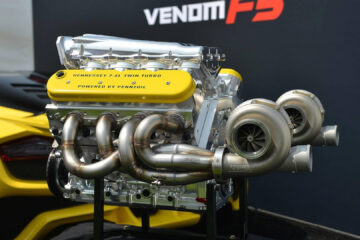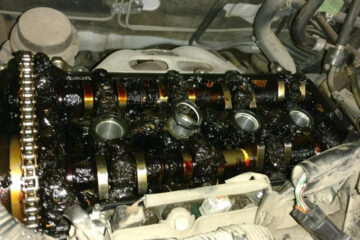3. Overheating — Warping, Cracking, and Total Breakdown
An engine running hot for even a short period is a recipe for disaster. Internal combustion engines rely on a stable operating temperature — typically between 90–105°C (195–220°F). If cooling fails and temperatures spike, components expand beyond their tolerance, gaskets fail, and metal parts start to deform.
Aluminum cylinder heads are especially vulnerable. Just a few minutes of severe overheating can warp the head, crack it, or cause a blown head gasket. Once coolant enters the combustion chambers or oil system, the damage accelerates — often invisibly — until the engine fails catastrophically.
Typical causes of overheating:
- Low coolant level
- Thermostat stuck closed
- Faulty radiator fan or water pump
- Blocked radiator or coolant passages
Warning signs:
- Rising temperature gauge
- Steam from the hood
- Heater suddenly blowing cold air
- “Sweet” smell of antifreeze
Prevention tip:
Check coolant levels regularly and inspect hoses for leaks or swelling. If the temperature gauge climbs unexpectedly, stop the engine immediately — continuing to drive could turn a simple leak into a full rebuild.
4. Cold Starts Without Proper Warm-Up — The Engine’s Most Vulnerable Moment
Starting an engine in cold conditions is one of the most stressful moments for its internal components. When oil is cold, it thickens and flows more slowly — often taking several seconds to fully reach critical areas like camshafts, bearings, and turbochargers. During this time, metal parts can rub almost unprotected, accelerating wear.
Worse yet, revving the engine or driving aggressively while it’s still cold multiplies the risk. Internal clearances aren’t yet fully expanded, oil pressure isn’t stable, and combustion is less efficient — all adding up to premature wear on rings, cylinder walls, and valvetrain components.
Risks of hard driving before warm-up:
- Scored pistons or cylinder liners
- Premature turbocharger failure
- Increased blow-by and oil consumption
Prevention tip:
Let the engine idle for 30–60 seconds after a cold start, especially in winter. Drive gently for the first few minutes — avoid high RPM until the coolant temperature reaches normal.







0 Comments